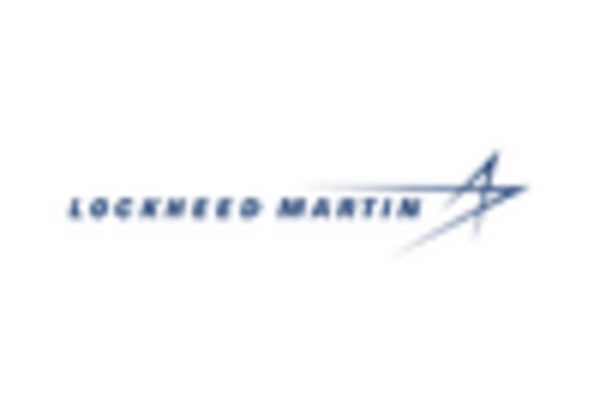Increased Demand for Earth Observation Data
The rising need for precise Earth observation data is a key driver for the Synthetic Aperture Radar In Space Sector Market. Governments and private entities are increasingly relying on satellite imagery for applications such as climate monitoring, disaster response, and resource management. The market for Earth observation data is expected to reach USD 7 billion by 2026, reflecting a growing recognition of the value of timely and accurate information. Synthetic Aperture Radar systems, with their ability to capture data in all weather conditions and during day or night, are particularly well-suited for these applications. This demand is likely to propel investments in radar satellite missions, thereby expanding the market and enhancing the capabilities of Synthetic Aperture Radar technologies.
Growing Applications in Defense and Security
The defense and security sectors are increasingly adopting Synthetic Aperture Radar technologies, which serves as a significant driver for the Synthetic Aperture Radar In Space Sector Market. The ability of radar systems to provide high-resolution imagery and real-time data is crucial for military operations, surveillance, and reconnaissance missions. As nations prioritize national security, investments in advanced radar systems are expected to rise. The defense segment is projected to account for a substantial share of the market, with estimates suggesting it could reach USD 3 billion by 2025. This growing emphasis on security applications is likely to stimulate further advancements in Synthetic Aperture Radar technology, ensuring its relevance in contemporary defense strategies.
Public-Private Partnerships in Space Exploration
Public-private partnerships are emerging as a significant driver in the Synthetic Aperture Radar In Space Sector Market. These collaborations between government agencies and private companies facilitate the sharing of resources, expertise, and funding, which is essential for the development of advanced radar systems. For example, partnerships have led to the successful launch of several radar satellites that provide critical data for national security and environmental monitoring. The trend towards collaborative projects is expected to continue, as it allows for the pooling of knowledge and technology, thereby accelerating innovation in the Synthetic Aperture Radar sector. This synergy is likely to enhance the overall market landscape, making it more dynamic and responsive to emerging challenges.
Technological Advancements in Synthetic Aperture Radar
The Synthetic Aperture Radar In Space Sector Market is experiencing a surge in technological advancements that enhance imaging capabilities and data processing. Innovations such as improved signal processing algorithms and miniaturization of radar components are driving the market forward. For instance, the integration of artificial intelligence and machine learning into radar systems allows for more accurate interpretation of data, which is crucial for applications in agriculture, forestry, and urban planning. The market is projected to grow at a compound annual growth rate of approximately 15% over the next five years, indicating a robust demand for advanced radar technologies. As these technologies evolve, they are likely to provide unprecedented insights into environmental changes and disaster management, further solidifying the role of Synthetic Aperture Radar in various sectors.
Environmental Monitoring and Climate Change Initiatives
The increasing focus on environmental monitoring and climate change initiatives is driving the Synthetic Aperture Radar In Space Sector Market. As climate change poses significant challenges, there is a pressing need for accurate data to inform policy decisions and mitigation strategies. Synthetic Aperture Radar systems are uniquely positioned to monitor changes in land use, deforestation, and urbanization, providing critical insights into environmental dynamics. The market for environmental monitoring is expected to grow significantly, with investments in radar technology aimed at enhancing data collection capabilities. This trend not only supports sustainability efforts but also highlights the essential role of Synthetic Aperture Radar in addressing global environmental challenges.


















Leave a Comment